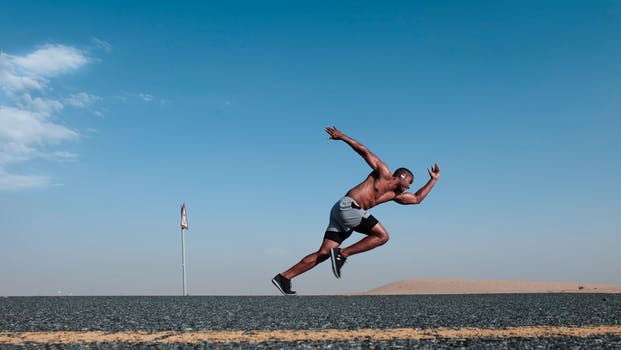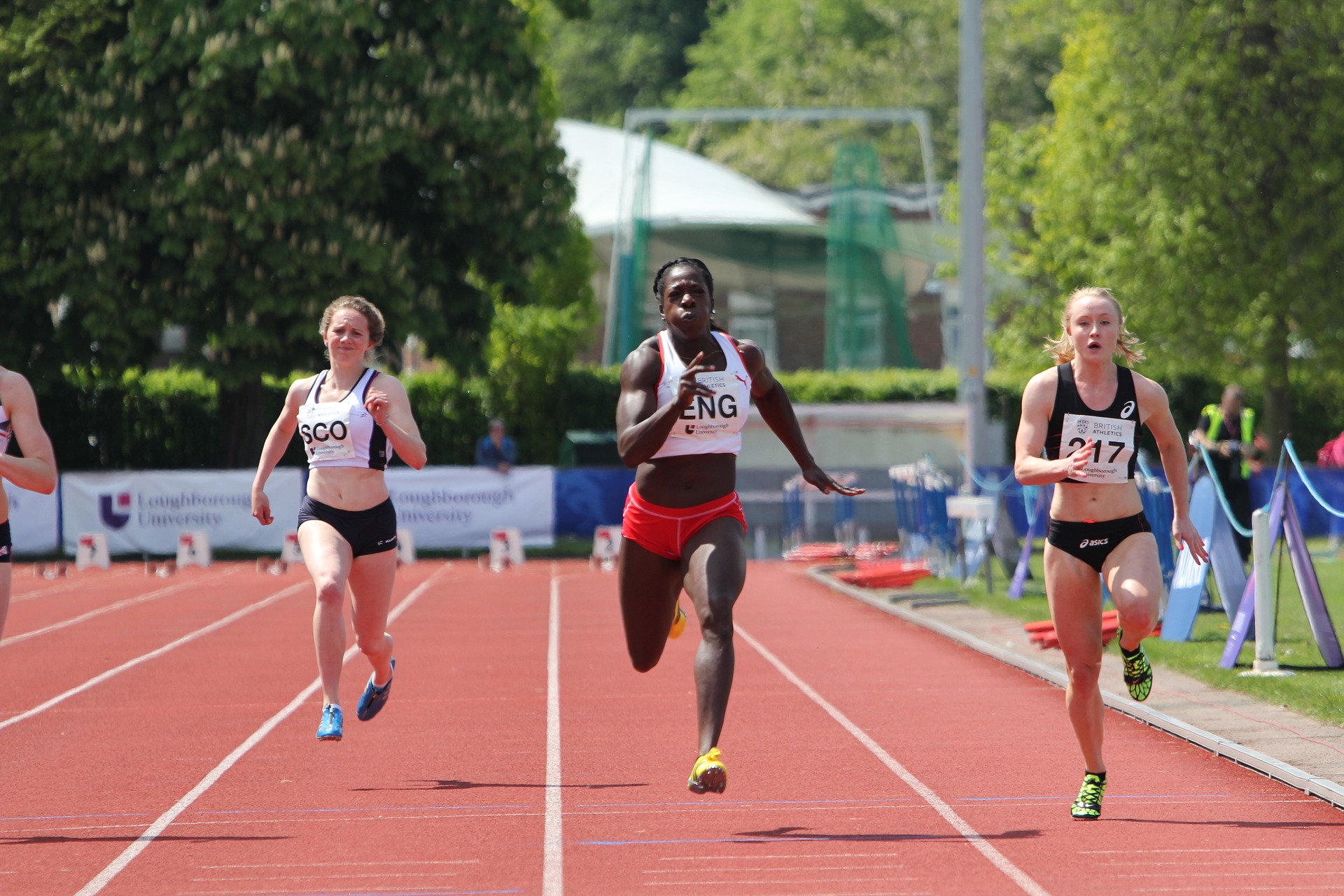Speed. Regardless of the sport, speed is essential to success. It is so important that coaches recruit speed, prize and reward it, and spend a lot of time training for it.
This blog is going to discuss speed in terms of sprinting, the weight room, and some random thoughts on different aspects of speed beyond those involving sprinting and the weight room. Finally I’ll have some thoughts about putting everything together.
Sprinting speed:
Coaches prize athletes who can run fast. Many of us went to the track and field coaches to learn how to do this. One of the challenges of this is that many of us failed to adapt this information to our sports and continued to train our athletes using the 100 meter race model and track coach tools.
This race model talks about stages in the 100 meter race; acceleration, maximum velocity, and speed endurance. It also talks about running mechanics and strategy being slightly different in each phase. The challenge with this is that we’re not training football players, basketball players, baseball players, tennis players, etc. to run the 100 meter race. We’re supposed to be training them to be fast in the context of the needs of their sport. That means it is okay to deviate from the way that track athletes train.
What do I mean by this? Track athletes sprint, that’s all they do in their sport. Jumping athletes in track and field use the sprint to power the jump (i.e. sprinting is critical to their success as well). This means that these athletes are attaining a degree of technical perfection on the sprint and the phases of the race that the rest of us don’t need.
Track athletes use a lot of tools to help with their sprinting speed. These tools are being used to overcome Ozolin’s theoretical speed barrier. With the ultimate goals in mind (technical mastery and race success) track coaches approach these tools very carefully. If sprinting mechanics break down, or if sprinting speed suffers by more than x percent, then something needs to change.
Strength and conditioning coaches use many of these tools as well. Some are used in a similar fashion with similar goals. Others are modified. For example, sleds are used as a resisted sprinting tool and as a conditioning tool. With resisted sprinting we are concerned about maintaining sprinting form, avoiding leaning forward while sprinting, and ensuring that speed doesn’t suffer by more than ten percent. With conditioning we aren’t concerned about those things, we’re concerned about completing the distance. A track coach would not like this due to the concern about it leading to poor sprinting mechanics (remember their ultimate goals).
How can speed training be different for athletes that aren’t training for track? First, let go of the hundred meter race model with training your athletes. We need the athlete’s body in a position to be able to perform in their sport and we can’t necessarily do that using the hundred meter model. For example, the point guard is dribbling as he or she sprints down the court which is never going to lend itself to maximal velocity running mechanics.
Second, we do not to include speed training in the sport’s context. For example, when running from first to second base the baserunner has to stop on second base – they can’t run through the base because they can be tagged out. This means that we need to learn to run quickly from first to second, but we also need to learn to slide or stop on a dime.
Third, we can let go of the technical drills that the track athlete has to focus on. For example, I’m going to argue that non-track athletes aren’t going to really need A, B, and C drills. We don’t need to spend a lot of time on stride length or stride frequency drills. We need to teach force application and practice running fast – in the context of the sport. We need to be using those things that give us the biggest return for the athlete’s limited training time.
The weight room:
The weight room is a general tool for an athlete. By this I mean that it provides the physical foundation for athletic success, but it is not a substitute for practice and training your sports skills.
One of the principles that many of us use in the weight room is called velocity specificity. The idea is that we get stronger at the speeds of movement that we train at. With research it is unclear if there is a transfer between speed of movement in the weight room and speed of movement. I have written about this elsewhere, a lot of the early research establishing this principle was flawed, had results that contradicted the conclusions, or demonstrated that this principle didn’t hold up.
The first thing to realize is that we cannot duplicate sport speeds and sport power outputs in the weight room. In fact, the bar speed and power outputs don’t come anywhere near what athletes experience in sports. This goes back to the point that the weight room is a general tool for sports success.
Now I’m going to contradict myself. I think that in the weight room our intent should be to use our strength as quickly as possible. This goes back to what I’ve written elsewhere about learning to use your strength.
The Olympic lifts are one way to do this. Again, I don’t think there’s direct transfer between them and sports just because we cannot duplicate the velocities and power outputs in the weight room, but they teach the all-out fast application of strength. There are also other ways to do this. Jump squats, bench throws, and the Westside approach to powerlifting (dynamic effort days, moving the bar as explosively as possible) are all other ways to do this.
Random thoughts:
We have covered the big two so far (sprinting and the weight room). There are other things that can help us with our speed. First, there are a lot of foot speed drills out there. Whether they be dot drills, ladders, or tings like that. One of the best foot speed drills that I like is the jump rope.
We can also train hand/eye coordination, which is another way to work on speed. Different types of catching, using different types of balls, is a great way to work on this.
There is also a lot of old fashion play and games that many of us did as children that help with the concept of speed and coordination. Anyone remember tag? There is no reason these things can’t be incorporated into training, could even end up being a great teambuilding experience.
Putting it all together:
So which gets trained first, strength or speed? Depends on which is most important to you.
What is important is to sync everything up so that each aspect of training supports each other, rather than conflicting or interfering.
For example, look at the following schedule:
Monday: heavy squats
Tuesday: heavy power cleans, sprints
Wednesday: heavy deadlifts, plyometrics
Thursday: squats, sprints
Friday: conditioning
Looks good right? The issue is that the legs never recover, they are stressed every single day during that week.
Now look at this schedule:
Monday: heavy squats, sprints, plyometrics
Tuesday: off
Wednesday: Olympic lifts, sprints, plyometrics
Thursday: off
Friday: volume strength training, conditioning
The second schedule allows for recovery between sessions.



